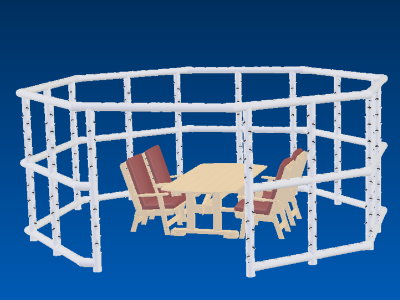Benefits of Hydroponics

Hydroponics means growing plants without soil. The roots are enriched with oxygen and a nutrient mix. In this way, the plants only come into contact with what they really need.
No Soil

Hydroponic systems increasingly consist of pipe constructions, tanks and other containers. The installation location is flexible and can be selected as outdoor, indoor, basement, garage, etc.
Flexible Location

Up to 80% water savings are possible thanks to closed systems. Only the water needed by the plants is used. Seepage and evaporation is almost impossible.
Water Savings

Depending on the system type, it is possible to achieve a significantly higher plant density/m² due to the vertical option. Plants with over 300 planting places/m² are not uncommon.
Little Space

Hydroponic plants are much less prone to bugs and disease. Pesticides are not necessary and treatments can be organic with neem oil, hydrogen peroxide or garlic.
No Pesticides

In total, all plants are growable with hydroponic systems. However, root and tuber plants require a drier environment. Aeroponics, modified ebb and flow basins or drip systems are used here.
All Kind of Plants
Additional advantages
Little maintenance
Hydroponic systems are very simple and require almost no maintenance aside from monitoring pH and nutrients. The purchase of finished systems and also as a DIY version are relatively cheap and durable. The main activities are planting, plant care, harvesting and system cleaning before refilling. Treatments for fungal or vermin infestations are biological and easy to do. Properly set up, indoor systems have little or no infestation. In the case of indoor systems, pollination must inevitably be carried out by hand. Grow lights are absolutely essential indoors. In conjunction with a solar system or wind generator, these systems are again absolutely cost-effective.
No weed
Weeding is not necessary with almost all systems. Flood and ebb tanks, trop systems and Dutch buckets can contain foreign plants to a limited extent, but these can be removed very easily and cleanly due to the growth medium (perlite, clay fire balls, etc.). In all other systems, a foreign infestation is almost impossible. Weed killers can be dispensed with entirely. Unlike in agricultural technology, it is also possible hydroponically to grow a wide variety of plant species in a confined space. However, it should be noted that some genera share the same diseases and pests (e.g. peppers, chillies and tomatoes).
easy harvest
Thanks to the user-friendly design, harvesting is easy and very clean. The vertical construction and elevated table systems are easy on the back and the harvest itself does not require any further cleaning. Weed killers and pesticides are basically dispensed with and vegetables and fruit can be eaten directly on site. A high plant density with little space requirement also facilitates the harvest.
Better Taste
Unlike conventional agricultural technology, hydroponic plants are only given the nutrients they need. In soil growth, one can only influence the additives contained therein to a limited extent. Unlike water, soil is almost impossible to clean.
Easy care
Due to the construction methods, care is reduced to clearing (trimming), disease detection and treatment, as well as biological pest control. A mix of hydrogen peroxide (food grade), neem oil, biological dishwashing liquid and water has proven to be a good pest deterrent. Hydrogen peroxide is very effective against fungal infestation. Garlic water can also be used against pests.
Clean work
Dirty hands are a thing of the past. Rake and shovel are replaced by hand-held measuring devices. The nutrient solution is organic and the plants are absolutely clean. No pesticides or weed killers are used. In this way, the "work" is reduced to the essentials - handling the plants and an early harvest.






